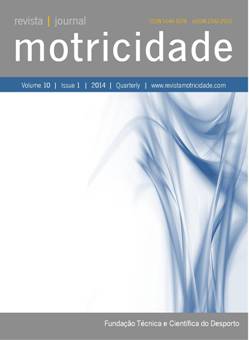The need for reference parameters of cortisol in athletes: A systematic review
DOI:
https://doi.org/10.6063/motricidade.2610Abstract
The cortisol levels are an important variable to measure stress. Yet there is still controversy about these hormone responses to physical exercise, sports training and competition. The purpose of this systematic review was to analyze the objectives, methodological procedures and main results of studies reporting cortisol hormone as a measurement of stress in athletes. There was a predominance of salivary cortisol (54.6%) in a wide variety of sports. Most research was conducted in individual sports (72.8%), male subjects (59%) and high-performance or professional athletes (91%). Several procedures and times of collection have been described in the literature. Changes in salivary cortisol level found in this review showed that most sports were considered as a possible source of stress for athletes. The highest increase in cortisol levels was found between baseline and post-competitive situation, as well as between samples taken on the competition day and those measured at the same time at rest. As a conclusion, there is the need to standardize the procedures for cortisol assessment in athletes, as well as the control of circadian rhythm in order to meet the reference values.
Downloads
Published
Issue
Section
License
The authors of submitted manuscripts must transfer the full copyright to Journal Motricidade / Desafio Singular Editions. Granting copyright permission allows the publication and dissemination of the article in printed or electronic formats and copyrights start at the moment the manuscript is accepted for publication. It also allows Journal Motricidade to use and commercialize the article in terms of licensing, lending or selling its content to indexation/abstracts databases and other entities.
According to the terms of the Creative Commons licence, authors may reproduce a reasonable number of copies for personal or professional purpose but without any economic gains. SHERPA/RoMEO allows authors to post a final digital copy (post-printing version) of the article in their websites or on their institutions' scientific repository.


